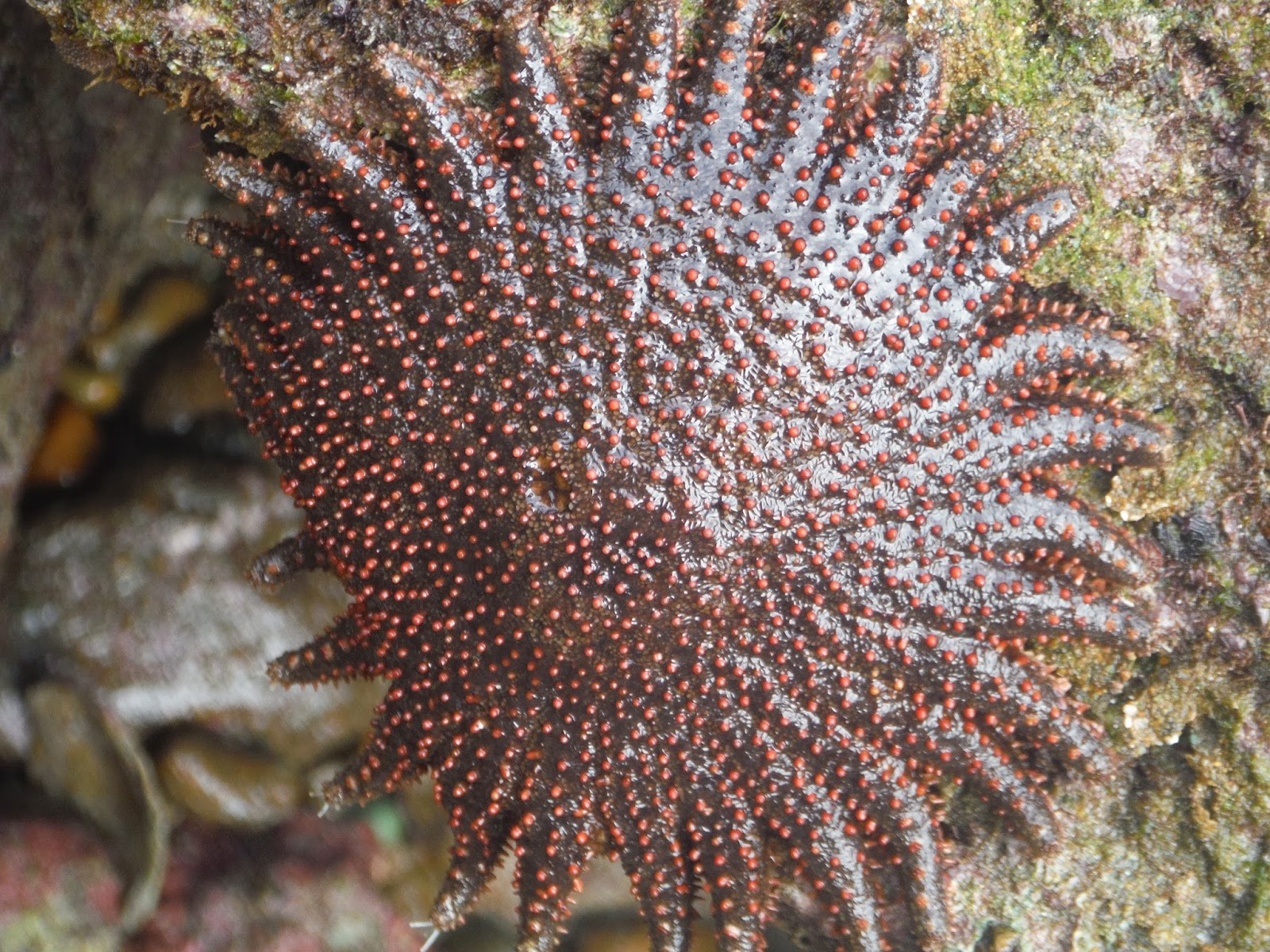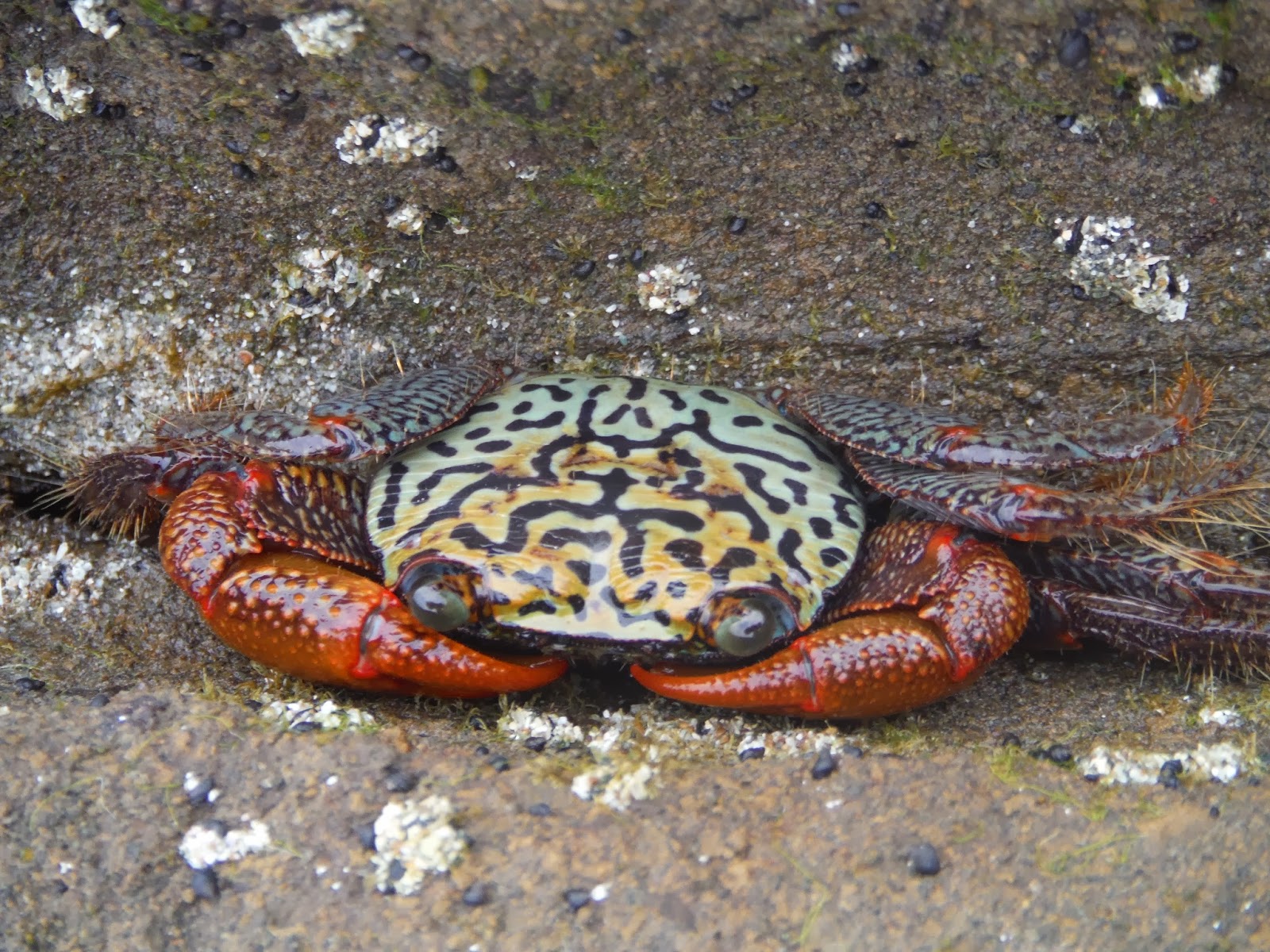So much has happened since my last post: I went to the coast of Ecuador for 7 days, went to Mitad Del Mundo, and went to Otavalo.
So our field trip to the coast started out with a 12 hour bus ride to Puerto Lopez Ecuador.
 |
| Image taken from Google Images shows where Puerto Lopez, Isla de la Plata, and Los Frailes are located along the coast. |
For the trip, our class had our own bus so it was pretty comfortable and we didn't have to worry about leaving things on the bus. The first hour or so we were winding down the mountains of Quito and I felt pretty motion sick as we descended in altitude. The bus ride wasn't too bad overall; we slept a lot and played Euchre. Plus the scenery was spectacular! We saw plenty of mountains, interesting road signs, some very well off towns and some very poor towns, and much more.
 |
| I can't be the only one who finds this sign comical, can I? |
At one point we drove through a small town where the people treated us like celebrities: waving, shouting things, and staring at our bus.
 |
| This is the city where people were treating us like Beyonce's tour bus... |
This is our view as we were arriving in Puerto Lopez...
We stayed for 4 days in Puerto Lopez in a hostel called Hostel Villa Columbia.
 |
| My room was in the upper left corner. |
The first night the sky was beyond beautiful.
 |
| This is a gorgeous view from our balcony. |
 |
| These hammocks were the perfect stargazing location in the courtyard of our hostel. |
In the mornings, we got breakfast at our hostel which consisted mostly of fruit, bread, and coffee or tea.
For class we had to hike to remote beaches and do studies on rocky intertidal shores.
 |
| This rock formation at La Playita looks sort of like a gorilla. |
 |
| This is our group navigating the rocky shore like billy goats! |
 |
| Quadrats are our favorite thing to do! We did so many quadrat samples and had a grand time with each one... not so much. |
We did lots of sampling along the shore which including estimating algae cover and sessile organisms within a quadrat as seen above. The algae was pretty hard to identify sometimes. At the same time there were a couple groups doing quadrats, there were two other groups which collected biomass (aka took algae scrapings) and measured whelk size.
 |
| This is one type of whelk that we were measuring along the coast. |
We also saw some larger forms of wildlife that were pretty interesting.
 |
| Pelican mid-flight. |
 |
| I think this is a sunflower starfish. |
There were also some local people out fishing and some were snorkeling for octopi.
 |
| This guy had a whole belt full of octopi! It was so interesting to see this in person. Fun fact: when an octopus sees another octopus, it's natural reaction is to come out of hiding to attack it. Therefore some people would put a dead octopus on an end of a stick and use it to lure them out of hiding to be captured. |
 |
| This rough looking little cutie was with some man looking for octopus. |
 |
| This is after we were finally done doing our quadrats! |
Also in Puerto Lopez we went to Isla de la Plata (Island of Silver) to go for a hike around the island and snorkel. It was about an hour boat ride to the island. We saw sea turtles right as we were pulling up to the beach!
 |
| They were coming right up to the boat and the crew was throwing pieces of banana to them that they were eating. |
|
The boat pulled up toward shore and we had to get off into the water to walk up on the beach.
A lot of people think that the island was named Isla de la Plata because Francis Drake's boat went down near the island with all of it's treasure. Hence, the name Island of Silver. However, the island was really named Isla de la Plata because the Blue Footed Boobies spend a lot of time around the cliffs of the island, which results in a lot of excrement along the sides of these cliffs. This is also known as guano. When sailors would come upon the island around dusk, the cliffs would shine silver from all the guano.
 |
| Here is an example of one of the cliffs of the island. |
|
 |
| Momma boobie and her chick. |
 |
| Two juvenile boobies. It is likely that the one standing is the older sibling and is stronger. Normally boobies have 2-3 chicks, but only 1 survives either due to siblicide (one pushing the other out of the nest for access to more resources) or because food is so scarce. Sometimes mother nature is cruel... |
We saw so many cool things on Isla de la Plata, boobies only being some of them...
Besides all the cool terrestrial wildlife, there was also an amazing cliff that was part of our hike in which we could see the shadows of some sharks swimming below.
 |
| Standing on a cliff on Isla de la Plata |
 |
| What an amazing view from the top! |
This is a picture of the restaurant that we had lunch and dinner at every day while we were in Puerto Lopez. Good ol' Spondylus. It was right next to the dive shop that took our class out snorkeling and diving.
The day we left Puerto Lopez to go up to Esmeraldas we went to the fish market at like 7 a.m. to see all the fishermen bringing in their catch for the morning. It was really neat to see such fresh fish and observe the interworkings of the market.
 |
| There were swordfish and thresher sharks |
 |
| Fish of all different colors too |
 |
| This is a less gruesome shot of a very skilled fisherman dressing the sharks. He was so fast at this! |
|
That is it for Puerto Lopez! Stay tuned for more scenes from our next episode: Esmeraldas. It is bound to be quite fascinating also.
Chau







































No comments:
Post a Comment
Note: Only a member of this blog may post a comment.